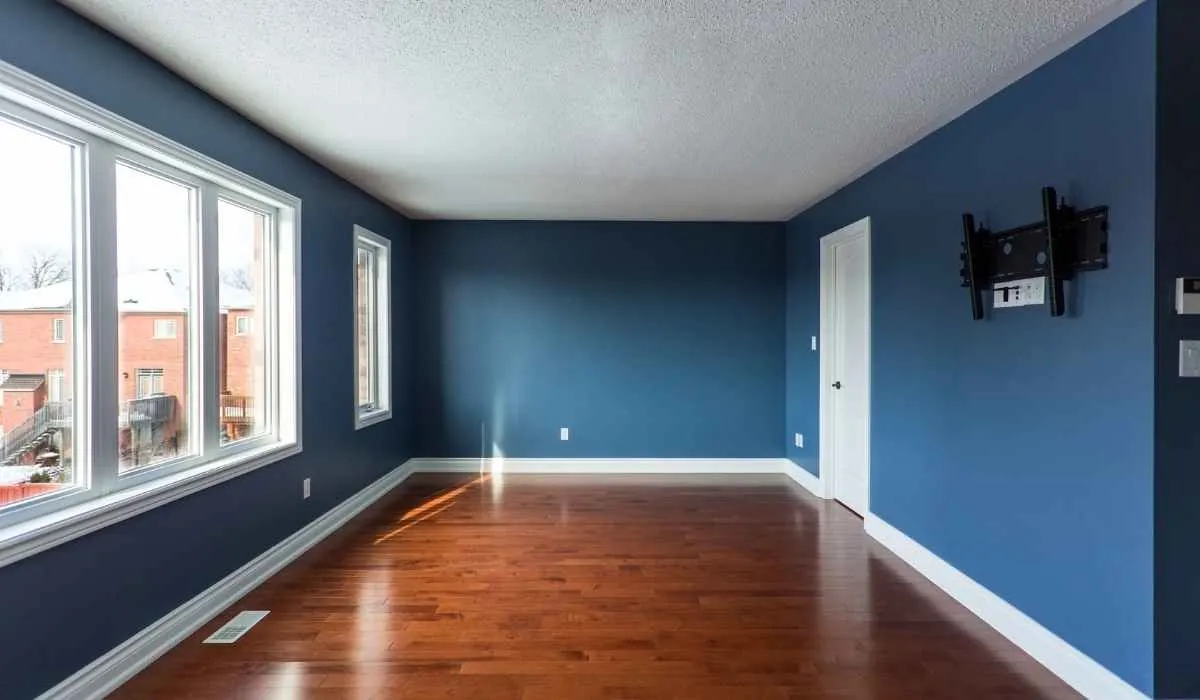The importance of ensuring a room’s acoustics is set up correctly is often overlooked, leading to the space never reaching its sonic potential. Bass frequencies can be particularly problematic to the overall sound of a room.
The placement of a bass trap needs to be carefully considered, as it significantly impacts the effectiveness. The tri-corner position, which is the point where two of the walls come into contact with the floor or ceiling, is usually a good choice for reducing the prominence of unwanted bass sounds.

Every space is different, meaning there is no one-size-fits-all solution to placing a bass trap. Nevertheless, there are specific rules that you can follow to ensure that the bass traps are as effective as possible at preventing dreaded ‘boomy’ sounds from creating a poor acoustic environment. This comprehensive guide will give you all the essential information on proper bass trap placement.
Where Should You Put a Bass Trap?
Any room or space used for audio-related purposes, whether for recording, mixing, or simply listening to the audio, will benefit from acoustic treatment. When sounds are played in any space, many different frequencies are projected around the room and into your ears.
The various frequencies combine to create the overall sound of the room. This is affected by how the sound waves reflect off the surfaces, walls, and other materials in the space.
Bass traps are great tools for minimizing the prominence of low-end frequencies, which can overpower the midrange and treble frequencies. Depending on how the room is shaped and its dimensions, bass notes may be very problematic to the way music or other audio sounds in the space.
Rather than simply positioning bass traps in random places around your room, you need to consider where they will be most effective. Firstly, I would recommend testing bass traps in the tri-corners of the space.
A tri-corner is a point in the room where three surfaces meet – two walls and the ceiling or floor. These areas are the main culprits when it comes to producing undesirable bass frequencies.
The lower the pitch of a note is, the longer its waveform will be. Placing bass traps in the corners of the room will prevent the build-up of long waveforms, which naturally gravitate to these areas.
After placing bass traps in the tri-corners of your room, you can then add traps to the other corners and monitor whether this improves the overall sound of audio played in the space. If the bass traps are in a suitable location, you’ll hear a noticeable difference in the clarity of the midrange and treble frequencies which won’t be overpowered by too much bass.
This will also ensure that the bass traps aren’t taking up space that could be used for other equipment, which would be the case if they were placed in the center of the room.
Acoustic panels are used for the general deadening of a room, and to prevent sound from escaping, they can be placed on the walls all around the space. However, bass traps are more effective in the corners because this is the most common place where low-end frequencies become problematic.

How Do Bass Traps Work?
It’s pretty obvious that the purpose of a bass trap is to capture low-end frequencies, but it’s essential to also understand how they achieve this so that you can decide where the best place is to put them in a room.
At its most basic level, a bass trap is an object made from sound-absorbing material designed to absorb low-end frequencies. They target sound frequencies below 250 Hz, those that cause common issues in recording studios, live rooms, or other audio spaces.
Acoustic panels are similar to bass traps, but they target all sound frequencies rather than focusing specifically on the low-end. They’re commonly used for soundproofing a room and preventing the noise from being audible outside the space.
Bass traps work by absorbing the audio frequencies rather than reflecting them. In a room that has not been acoustically treated, low-end frequencies can bounce from one wall to another, which is what causes there to be problem frequencies in certain areas.
That’s why sometimes you’ll find certain notes on an instrument or specific parts of a song sound louder than others. The frequencies resonate and build up in certain parts of the room, making mixing, producing, or listening to audio difficult.
Bass traps prevent the low-end from freely reflecting around the space and, as a result, stop them in their tracks. This deadens the low end before it can overwhelm the other frequencies in the midrange and high-end.
The great thing about bass traps is that they can be used in a home or professional recording studio, a home audio theatre, or a mixing room. They’re great for all audio applications and will significantly improve the sound of a space.
Why Should Bass Traps Be Placed in The Corners of a Room?
Placing your bass traps in the corners of a room is likely to yield the best results. It’s all well and good knowing this, but if you understand why this is the case, you’ll be better equipped to put them in the ideal position.
Soundwaves reach their point of maximum velocity in the corners of the room because there are two or three surfaces that can reflect off quickly. In the middle of a room, the velocity of a soundwave won’t be as strong as it isn’t being bounced off multiple surfaces.
Ideally, bass traps should absorb the most soundwaves possible. If they’re positioned in the wrong location, such as directly in the middle of a wall, they will be much less effective at doing this.
If the soundwaves reach maximum velocity in the corner of a room, it makes sense to position the bass traps there so they can target them at their most vital point. Ultimately, the corners are the part of the room that causes the most problematic bass frequencies.
That doesn’t necessarily mean that you need to put bass traps in every corner of the room. As we suggested earlier in this guide, a tri-corner is the first position that you should put a bass trap in, then you should try each corner to see which improves the overall sound.
Corners are not always problematic for bass frequencies, but if low-end tones stand out more than other sounds, the corner of the room is highly likely to be where the issue occurs.
How Effective Are Bass Traps?
Bass traps are one form of acoustic treatment that certainly have the potential to improve the sound of a room. Depending on your intentions for the space, and the specifics of its shape and dimensions, you may also need to use other acoustic treatments to get the best results.
If after installing bass traps in the positions that we’ve suggested in this guide and you still find that there are problem frequencies, or that the sound just isn’t quite right, then you might need to use acoustic panels to deaden more of the frequencies.
This is likely to be the case in larger spaces. Small rooms can be easily treated with bass traps placed in the corners, but large areas need more than this to ensure that the sound waves don’t reflect off each surface too frequently, causing a chaotic sound.
Placing regular acoustic panels at consistent intervals around the room will help with two things. Firstly, it will dampen the sound of any harsh frequencies, and secondly, it will help people from hearing the audio from within the room by reducing the reverberations.
You might also find that in addition to being effective at reducing the volume of low-end frequencies, bass traps also dampen the other frequency bands, which isn’t always a desirable side effect. If this occurs, you can get reflective bass traps that are designed to absorb the low-end but allow the midrange and higher frequencies to move around more freely.
Bass traps are effective if your only issue is with low-end frequencies, but if you think that other frequencies are also causing problems, it’s worth considering other measures like acoustic panels too.
Related Questions
How deep should bass traps be?
Bass traps should ideally be at least 3 inches in thickness, so that the material can absorb the low-end frequencies effectively. If the bass traps are too thin, they will be less likely to prevent problem frequencies from building up.
Do acoustic panels work for bass?
Acoustic panels can be effective at minimizing bass frequencies, but they will also reduce the prominence of midrange and treble frequencies. Therefore, they’re not the best choice if you only want to target bass sounds rather than reducing the whole frequency range.
How do you know if you need bass traps?
The most obvious sign that a room would benefit from having bass traps installed is if certain low-end sounds are louder when you stand in different areas. This means that the frequencies are reaching a higher velocity, and they need to be absorbed.
